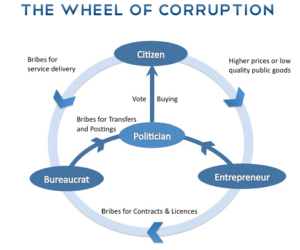Q. India ranks 85th amongst 180 countries in the Corruption Perception Index of 2021. In this context, discuss the various ways to tackle corruption in India, with special reference to Kautilya’s Arthashastra.
Approach:
- Start with the current status of corruption in India.
- Discuss the remedies to tackle corruption with special reference to Kautilya’s Arthashastra.
- Conclude accordingly.
Answer:
According to Transparency International (TI), India ranks 85 out of 180 countries in the Corruption Perception Index, 2021. In the Asian region, India has one of the highest incidences of bribery and use of personal connections to access key public services such as health and education. According to the same survey, state services particularly courts, police, revenue department, and hospitals are the most corrupt bodies.
According to Kautilya, corruption is in human nature. It is part of the human psyche. He propounded that public servants are paid less than their duties. This causes them to support fraud.
In this context, he has discussed various remedies of corruption in Arthashastra, which can be used to tackle corruption in today’s times in India as well:
- Effective implementation of laws: As per Kautilya, laws need to be effectively implemented and enforced to deter corrupt behavior. India has several laws and regulations in place to combat corruption, such as the Prevention of Corruption Act and the Right to Information Act.
- Strict punishment: He also suggested strict punishment in the nature of monetary penalty or jail, apart from disclosing his/her crime publicly so that no other person would make a shameful deed.
- Regular transfers: The public servants should be transferred continuously from one place to another to ensure not enough time is there to pick holes in the system and manipulate it.
- Strengthening institutions: The importance of strong and independent public institutions in preventing corruption is emphasized in Arthashastra to promote transparency, accountability, and the rule of law. Currently, there are organizations like Lokpal, Lokayuktas in the country for this purpose but they need to be further strengthened.
- Enhancing transparency and accountability: Increasing transparency in government processes and decision-making can help reduce the opportunities for corruption. This can be achieved through measures such as open data initiatives, public access to information, and public participation in governance. These essentially would work as the ‘Information Organization’ mentioned in Arthashastra, which informed about any embezzlement in the departments.
- Promoting integrity and ethical values: Kautilya argued for encouraging a culture of integrity and ethical values within government by bestowing public honor. It creates a sense of pride and boosts the motivation and morale of honest officials.
The menace of corruption has survived and thrived through the ages, which has always hurt the broader public interest. It is possible to eliminate corruption if the psychology or the mental set-up of the corrupt officers is changed and their internal moral compass guides them towards the direction of right as against wrong actions.




